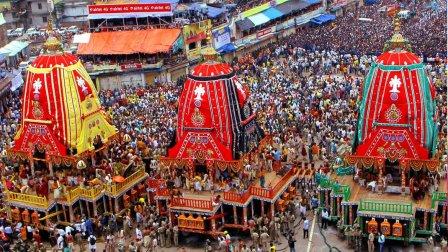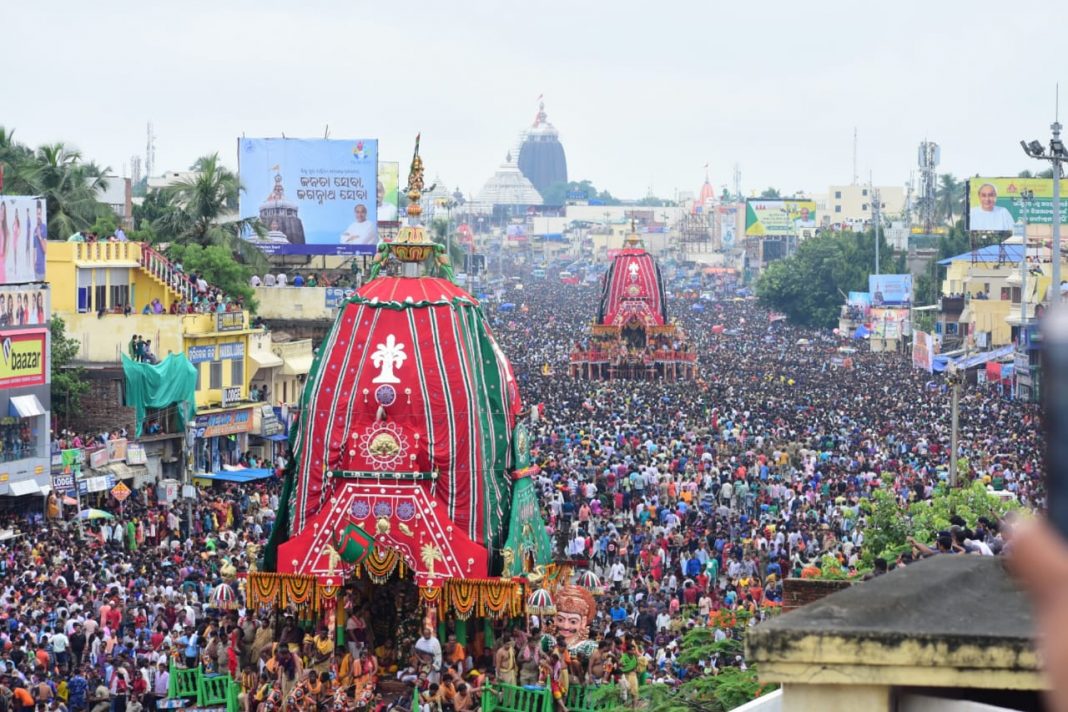Shashi Tharoor is a word juggler and more often than not has people scurrying for a dictionary. In his latest piece on Shashi Tharoor’s Word of the Week, he picked the word ‘juggernaut’, the Anglicized name for Jagannath.
The article is an attempt by the Congress MP to quash the negative connotations associated with Lord Jagannath and Rath Yatra, which he describes as “falsely distorted tales about India” by the colonial rulers. Referring to the 14th century travelogue of John Mandeville and his description of Hindus being crushed to death under the enormous wheels of the chariots, Tharoor wrote: “Hinduism in fact has no concept of such human sacrifice; if Mandeville really saw a Hindu killed under the wheels of a chariot, it can only be because a poor devotee stumbled and accidentally fell upon the path in the tumult and the enormous chariot could not easily stop or swerve on the narrow road.”
However, in his vehemence to defend Hindusim and break this ‘false image’ of the Lord, the author of 18 bestselling works too got his facts wrong about the sibling deities and the rituals of Jagannath Temple in Puri.

- Juggernaut is actually a mangling of Jagannath, the name of the deity carried in devotional procession in Odisha four times a year in elaborate yatras on land and water, of which the most famous is the Ratha Yatra, or Chariot Procession, in the Hindu month of Ashadha.
It is only once that Lord Jagannath, along with his siblings, is brought out of the temple. On other occasions like Chandan Yatra, his representatives are taken out in a procession.
“The deities step out of the sanctum sanctorum on Snana Purnima. They are brought to the bathing altar on the temple premises for the divine bath and then they retire to the anasara ghar (sickroom) for 15 days before embarking on the annual sojourn,” said Soumendra Muduli, servitor and Jagannath scholar.
2. This is when the idol is wheeled to the Puri temple in an enormous chariot
The sibling deities leave the Puri temple, which is otherwise known as Jagannath Temple, for Gundicha Temple for the nine-day annual sojourn.
“The Bahuda Yatra, when they return to the abode, commemorates the installation of the idols in the temple in 1451,” said Prafulla Rath, an expert in Jagannath culture.

3. Devotees line the streets in a frenzy, hailing the Lord with chants and prayers and craning their necks for a glimpse of the deity seated in the chariot, followed by lesser chariots bearing statues of his brother Balarama and sister Subhadra.
The chariots of Balabhadra (and not Balaram) and Devi Subhadra can by no means be called lesser, said Muduli.
Nandighosha – The chariot of Lord Jagannath
- It is 13.5 metre high
- The chariot has 16 wheels
- Total number of wooden pieces are 832
- The colour of cloth – Red and Yellow
- The chariot is guarded by Garuda
- The charioteers name is Daruka
- The flags name is Trailokyamohini
- The Horses in the chariot are Shankha, Balahaka, Shveta, Hardashva
- The ropes used are Shankhachuda
- The nine deities presiding in the chariot are Varaha, Govardhana, Krushna, Gopi-Krushna, Nursigha, Rama, Narayana, Trivikrama, Hanuman and Radra.
Taladhwaja – The Chariot of Lord Balabhadra
- It is 13.2 metre high
- The chariot has 14 wheels
- Total number of wooden pieces used are 763
- The color of cloth covering – Red and Green
- The chariot is guarded by Vasudev
- The charioteers’ name is Matali
- The flags name is Unnani
- The Horses in the chariot are Tibra, Ghora, Dighashrama, Swamanava
- The ropes used are Basukhi
- The nine deities presiding in the chariot are Ganesh, Kartekeya, Sarvamangala, Pralambari, Halayudha, Mrutyunjaya, Natmvara, Mukteshwar, Sheshadeva
Devadalana – The chariot of Devi Subhadra
- It is 12.9 metres high
- The chariot has 12 wheels
- Total number of wooden pieces are 593
- The color of cloth covering – Red and Black
- The chariot is guarded by Jayadurga
- The charioteers’ name is Arjuna
- The flags name is Nadambika
- The Horses in the chariot are Rochika, Mochika, Jita, Aparajita
- The ropes used are Swarnachuda
- The nine deities presiding in the chariot are Chandi, Chamunda, Ugratara, Vanadurga, Shulidurga, Varahi, Shyama Kali, Mangala and Vimala

4. By the 18th century, juggernaut was in common use as a synonym for an irresistible and destructive force that demands total devotion or unforgiving sacrifice — the sense in which it pops up in the novels of Charlotte Bronte and Charles Dickens, and even Robert Louis Stevenson, who applied it to Dr Jekyll’s foil, Mr Hyde. It was only Mark Twain, in his autobiography, who described Juggernaut as the kindest of gods; and indeed the millions of worshippers in Puri will tell you that Lord Jagannath is a figure of reverence, not of fear.
‘Juggernaut’ entered the English language in the early 19th century. Reverend Claudius Buchanan, an Anglican chaplain and a staunch supporter of Christian missions to India, presented ‘Juggernaut’ as a dangerous, violent, and bloody religious cult. In Christian Researches, published in 1811, Buchanan described devotees throwing themselves under the wheels of Juggernaut’s chariots.
He wrote: The idol called Juggernaut has been considered as the Moloch of the present age; and he is justly so named, for the sacrifices offered up to him by self-devotement are not less criminal, perhaps not less numerous, than those recorded of the Moloch of Cannan.
And he may not be entirely wrong. “It is a belief that the one crushed under the wheels of the chariots attain salvation. There are references to such incidents in ‘Madla Panji’, a chronicle of the Jagannath Temple, Puri,” said Muduli.
Rath said that many leprosy patients made Puri their home in the 17th century with the hope that the Lord would cure them. “There have been instances of people being total cured. However, there may also been incidents when people chose death to the pain and voluntarily sacrificed self before the wheels of the chariots,” he added.


Comments are closed.